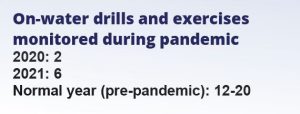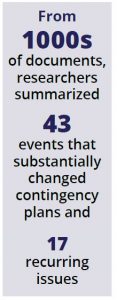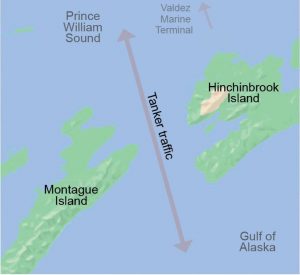The Council has released its annual report on drills and exercises conducted in Prince William Sound in 2021. This report highlights the continuing effects of the COVID-19 pandemic and lessons learned.
Reduced on-water monitoring for second year
 For the second year in a row, the Council has been unable to monitor the on-water drills and exercises in Prince William Sound as closely as pre-pandemic years.
For the second year in a row, the Council has been unable to monitor the on-water drills and exercises in Prince William Sound as closely as pre-pandemic years.
The Council has not been allowed on tugs or barges since early 2020, given COVID safety precautions. To be able to monitor some drills, the Council has chartered boats to observe from afar, but evaluation has proved difficult from such a distance.
“We can’t see the full evolution of the exercise or hear communications,” says Council drill monitor Roy Robertson. “We can’t tell if the crews are having problems deploying boom and we can’t time the activities like we usually do.”

